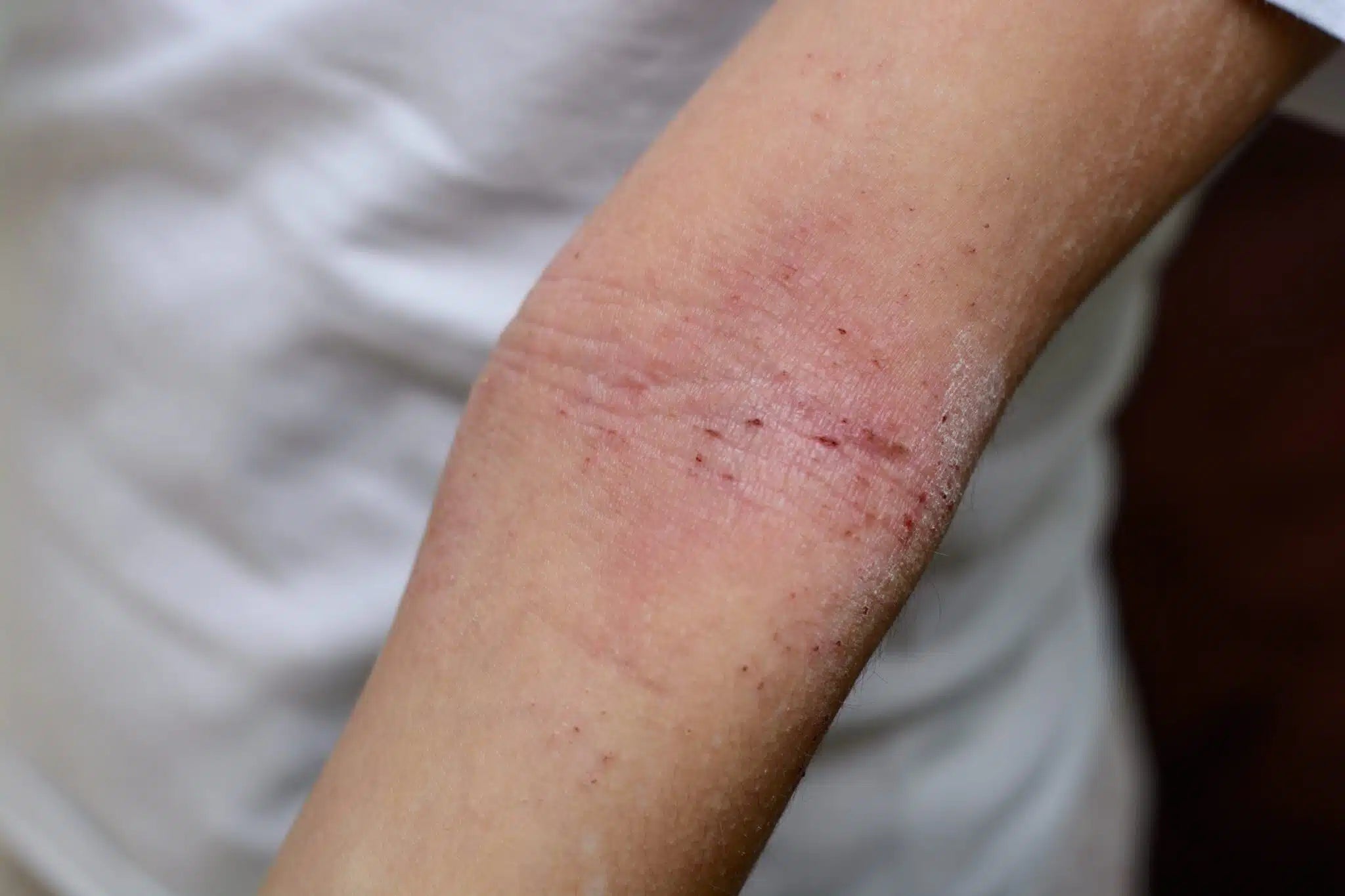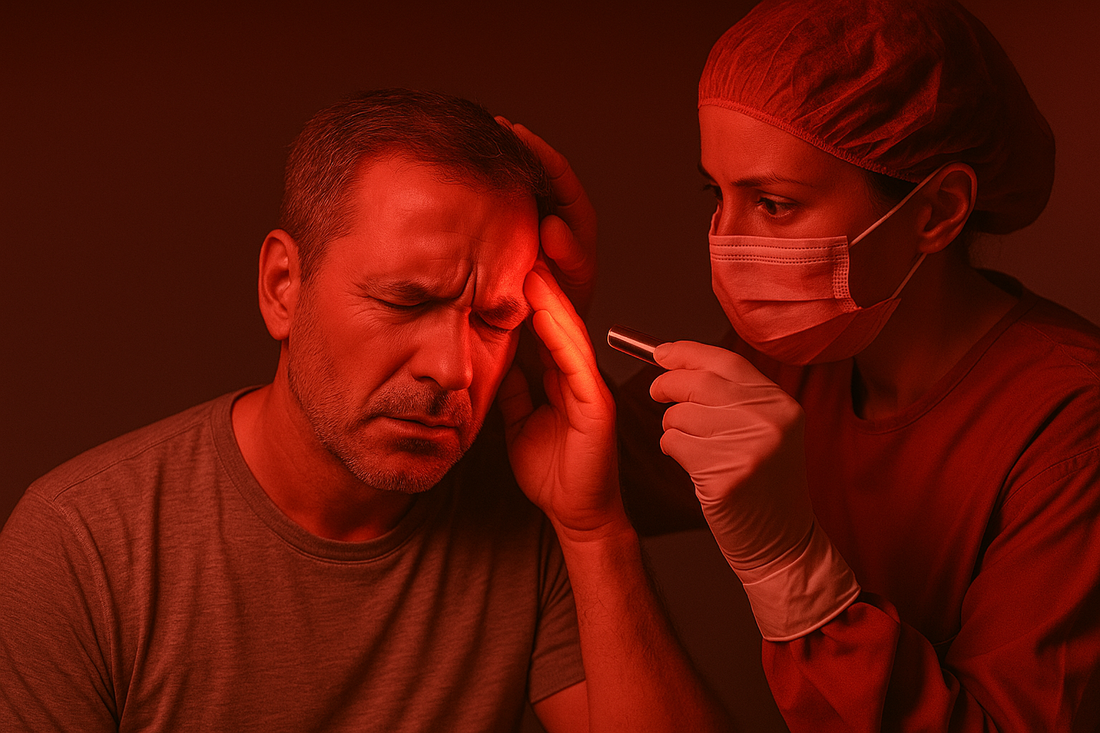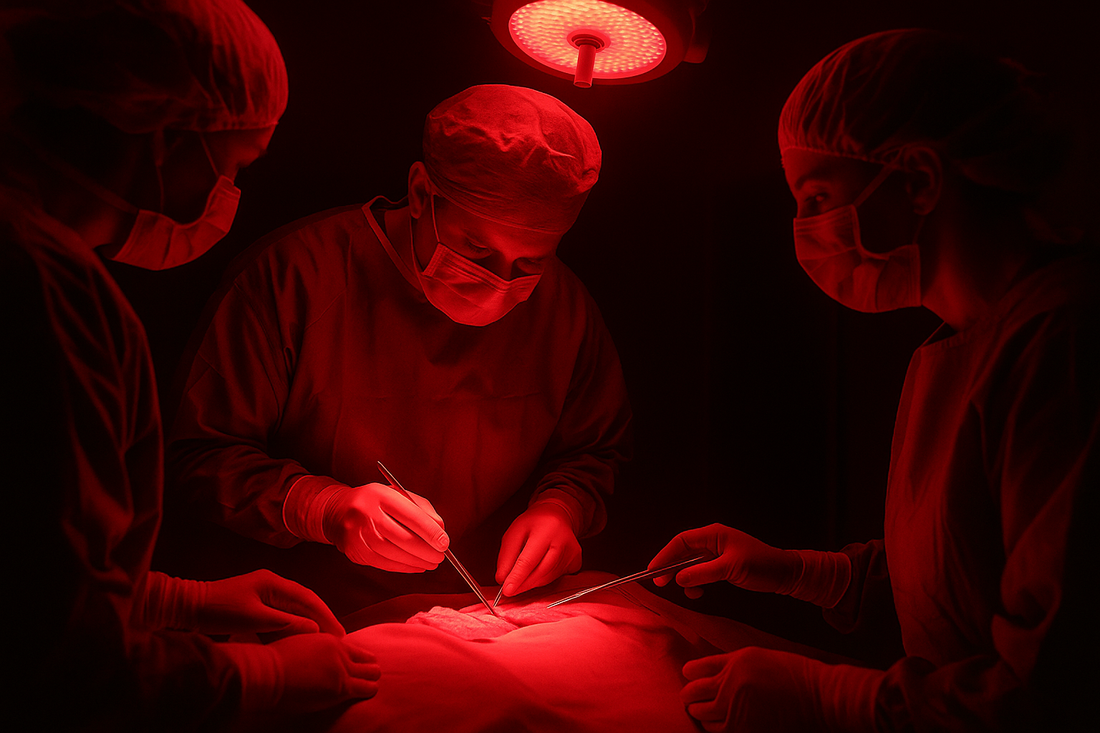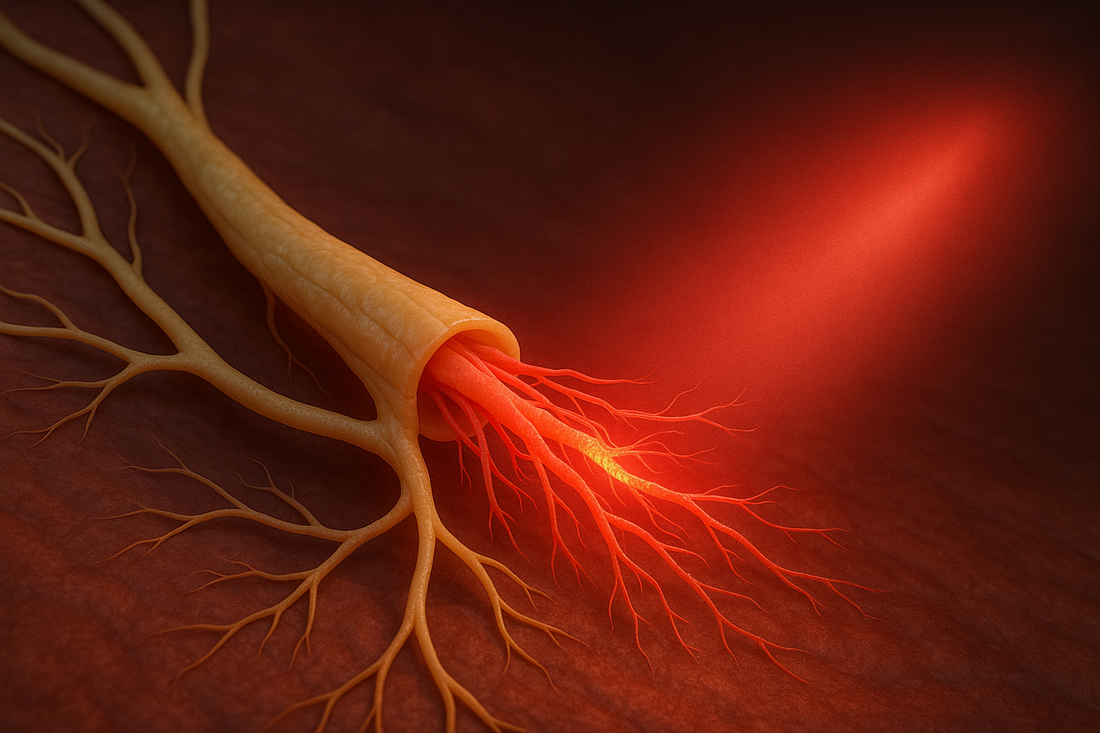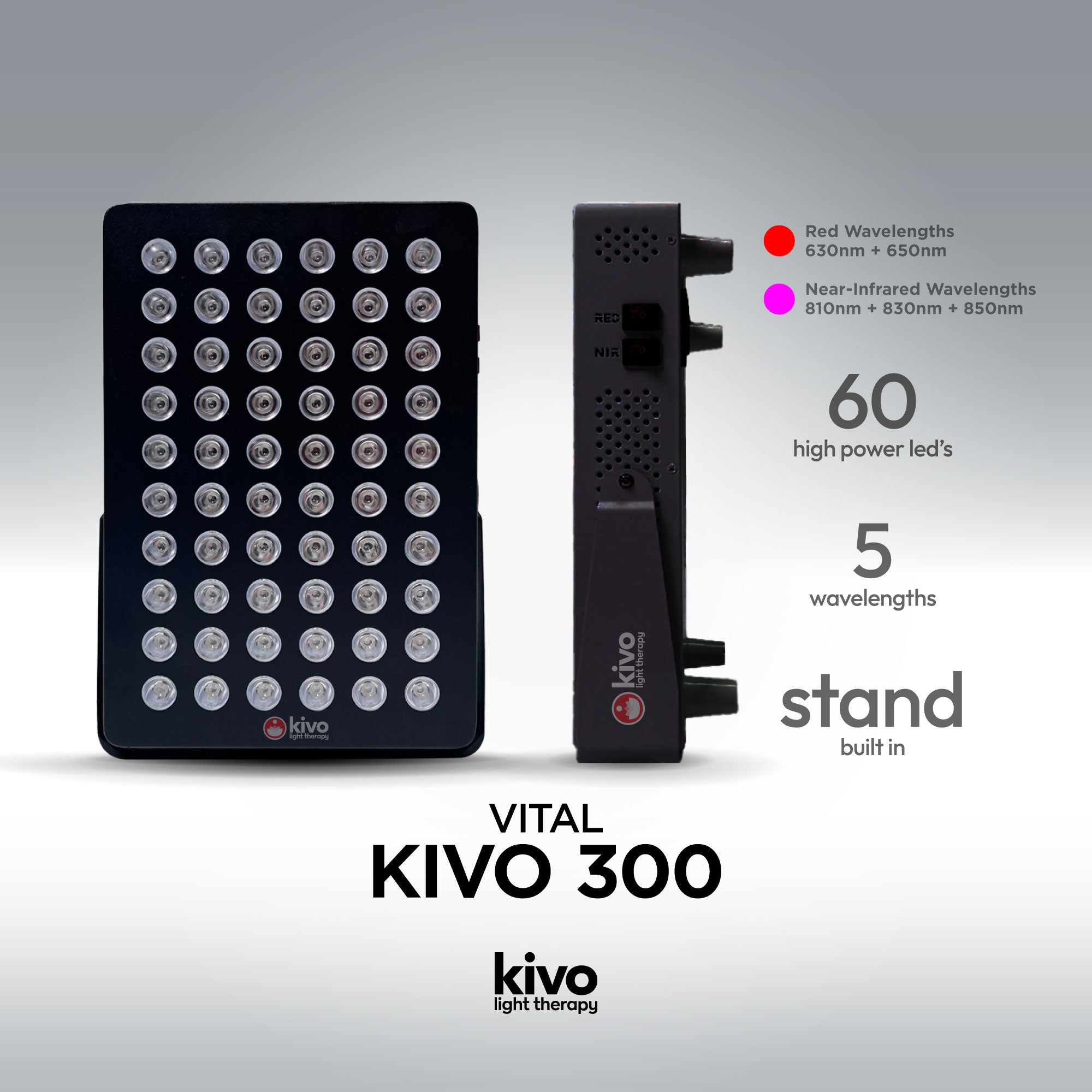Eczema, a chronic inflammatory skin condition affecting millions globally, is characterized by symptoms such as redness, itching, and swelling. Traditional treatments for eczema range from corticosteroids to immunomodulators, but the potential for side effects and the chronic nature of the disease drive interest in alternative therapies. Light therapy, specifically red and blue light, has gained attention for its therapeutic properties in managing skin conditions like eczema. Companies such as Kivo, which produce red and blue light therapy panels, are part of this growing trend. This article will explore the role of red and blue light therapy in treating eczema, backed by scientific evidence and clinical studies.
Understanding Red Light Therapy for Eczema
Red light therapy (RLT) utilizes wavelengths of light between 620-700 nanometers (nm) to penetrate the skin and stimulate cellular processes. It’s often referred to as low-level light therapy or photobiomodulation and is used to reduce inflammation, promote healing, and support immune response. For eczema patients, where inflammation is a key issue, red light therapy’s anti-inflammatory properties hold significant promise.
How Red Light Affects Skin Cells
Red light works by penetrating the skin’s surface to reach the mitochondria—the energy powerhouse of cells. Studies suggest that red light increases adenosine triphosphate (ATP) production, the cellular fuel necessary for various biological processes. This boost in cellular energy accelerates skin regeneration and healing while reducing the inflammatory response. One study found that red light at 630nm led to a significant reduction in skin inflammation and lesions in eczema patients, with an added benefit of zero side effects reported.
Moreover, RLT enhances collagen production, essential for maintaining skin elasticity and integrity, a crucial factor given that eczema often results in compromised skin barriers. Collagen, along with other proteins, helps to repair skin damaged by scratching and chronic inflammation.
Anti-inflammatory and Itch Reduction Properties
Eczema is fundamentally driven by inflammation, leading to flare-ups of itchy, red, and sometimes oozing skin. RLT directly targets this inflammatory process. By modulating the activity of inflammatory cytokines and promoting mitochondrial function, red light therapy reduces the immune response that exacerbates eczema symptoms.
A 2021 study highlighted that red light therapy significantly reduced pruritus (itchiness), with 79% of eczema patients reporting a decrease in itching after consistent red light exposure. Another 71% experienced improvements in their skin’s rash appearance without adverse effects. Red light therapy also appears to reduce the thickness of the skin often associated with chronic eczema, further demonstrating its utility as a long-term management tool.
Combining Red Light Therapy with Other Treatments
Studies suggest that combining red light therapy with other therapeutic approaches can yield even better results. For example, combining red light with **topical creams** like corticosteroids or natural anti-inflammatory agents such as **curcumin** has shown synergistic effects, reducing the severity of eczema symptoms more effectively than either treatment alone.
Near-Infrared Light: An Adjunct to Red Light
Near-infrared (NIR) light, operating at wavelengths of around 830-850nm, is often used in tandem with red light therapy to treat more severe skin conditions. NIR penetrates deeper into the skin than red light, making it effective at targeting inflammation located in deeper tissue layers. It can further reduce the immune system's response and improve blood circulation, both critical for managing eczema flare-ups.
Some products, such as those developed by companies like Kivo, incorporate both red and NIR wavelengths to create a more comprehensive treatment approach for skin issues like eczema. These panels offer non-invasive, at-home solutions for patients seeking alternative eczema treatments.
Blue Light Therapy: A Different Approach for Eczema
Blue light, known for its shorter wavelength (around 400-500nm), has long been recognized for its antimicrobial properties. Though more commonly used in the treatment of acne due to its ability to kill **Propionibacterium acnes**, blue light has found some applications in eczema therapy as well.
Antimicrobial Benefits
One of the key challenges for eczema patients is the risk of secondary infections, often caused by scratching, which compromises the skin barrier. Staphylococcus aureus, a bacterium that thrives on damaged skin, is a common cause of infection in eczema patients. Blue light therapy can help manage these infections by killing bacteria on the skin’s surface. While its anti-inflammatory effects are less pronounced compared to red light, the ability of blue light to reduce microbial load can be helpful in preventing eczema from worsening due to infections【9†source】.
Reducing Itch and Inflammation
Recent research also suggests that blue light may have anti-inflammatory properties. A study published in the *Journal of Investigative Dermatology* found that blue light could modulate **cytokine production**, reducing inflammation in eczema-affected skin【9†source】. However, more research is needed to fully understand the extent of blue light's benefits for eczema, as its primary focus remains on antimicrobial action.
Safety and Efficacy: What Does the Science Say?
Unlike UV light therapies, which are known to carry risks of skin cancer and premature aging, both red and blue light therapies are considered safe, with minimal side effects. Red light therapy, in particular, has been lauded for its non-thermal nature, meaning it does not heat the skin, avoiding burns or damage. **FDA-cleared devices**, including those from companies like Kivo, ensure that the light intensity and wavelength stay within safe limits for home use.
While red light therapy has shown great potential in clinical studies, it is important to note that these treatments are still considered adjunct therapies. They are most effective when combined with a holistic eczema management approach, including moisturizing, avoiding triggers, and, in some cases, topical or oral medications prescribed by a healthcare professional.
Practical Considerations for Using Red and Blue Light Therapy
For individuals considering light therapy for eczema, it’s important to establish a routine. Light therapy is most effective when used consistently over time. Devices such as those offered by Kivo make this easier by providing panels that can be used at home. Many devices combine red and NIR light, offering a more comprehensive treatment. Sessions typically last 10 to 20 minutes, and users may need to undergo treatment multiple times per week to see significant improvements.
Moreover, while the upfront cost of such devices might seem high, they are a worthwhile investment compared to long-term spending on prescription medications or frequent visits to dermatologists. Kivo’s panels, designed for ease of use and effectiveness, can offer a viable alternative for those seeking relief from eczema symptoms.
Red and blue light therapies represent promising advancements in eczema treatment, offering patients non-invasive, drug-free options to manage their symptoms. Red light therapy’s ability to reduce inflammation, enhance healing, and improve skin barrier function positions it as a strong candidate for eczema management. Blue light, while primarily antimicrobial, can complement red light by reducing the risk of infections in eczema-prone skin. Products like those offered by Kivo combine these therapeutic wavelengths, making light therapy an accessible and effective option for individuals seeking alternative treatments for eczema. However, patients should always consult with a healthcare provider before starting any new treatment regimen to ensure it aligns with their specific needs.
Recommend Use of a Kivo Red Light Panel to help with the symptoms of Eczema
- We recommend one of our 7 wavelength models - depending upon the area being treated a 300 series panel (small) or a 1000 series panel (large) is perfect.
- Clean the skin to remove any creams, oils, or residue using cleansers you normally use for eczema.
- When using blue light you MUST use the provided googles.
- Using the blue light option on your panel, sit 15cm or 6 inches away, and use for 7-8 minutes per area of your body. Do this for 5 days, and on the 6th day take a break.
- After using the light, we recommend using a product such as E45 CREAM to help moisturize and protect your skin effectively.

